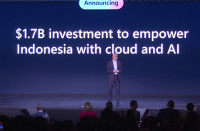
NASA officials on Wednesday (November 2) announced the successful completion of critical performance tests of the new James Webb Space Telescope. Officials unveiled the mirror in the next-generation space telescope at the Goddard Space Flight Center in Greenbelt, Maryland. NASA administrator Charles Bolden said the instrument represents a great achievement for the agency.
“This is technology that did not exist when this telescope was conceived,” he told reporters at a briefing. “And when it was agreed that we would do this, the technology still did not exist. So, we have done what I have always said about NASA: we told people what we were going to do, we made a commitment of a schedule in time, and we have been on that for about six years now.”
Senior Astrophysicist Dr. John Mather admitted to some apprehension about how the new instrument would perform, but said engineers had done everything “humanly possible” to insure its success.
“I think I’d be crazy to tell you I wasn’t a little nervous, but I would say also, we have a process which does as well as humanly possible to make sure it will do what we say it will do. It’s a little like packing up your parachute just before you jump.”
The Webb Telescope was originally designed to replace the aging Hubble Space Telescope, which was launched in 1990. It’s flawed mirror was corrected during a series of spacewalks in December 1993, and it sent back high-resolution images of space. Since then, the telescope has been serviced several times, replacing gyroscopes and solar panels, allowing it extend its lifetime. Mather said, once the Webb telescope is launched, the two telescopes will be able to provide completely different perspectives of objects in space.
“Hubble and Webb can look at the same planets from different angles. That gives you a stereoscopic viewpoint,” Mather said.
The Webb telescope is currently scheduled to be launched in 2018.
(c) Copyright Thomson Reuters 2016







